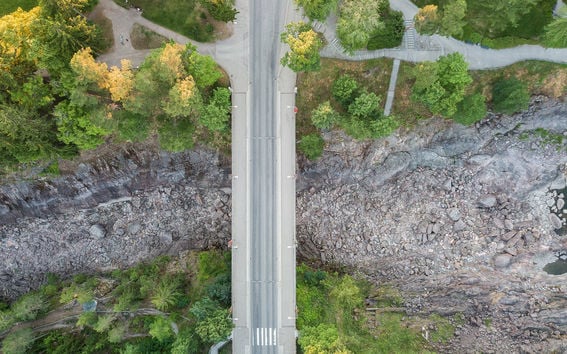Even Finland should be concerned about droughts

Drought is one of the most devastating –and expensive natural disasters worldwide. It costs the EU and UK an estimated €9 billion per year on average, and it threatens every society on Earth – even the land of a thousand lakes.
Finland’s drought-related risks and vulnerabilities were the focus of Lauri Ahopelto’s doctoral thesis, which was reviewed in March. So far, there hasn’t been much research on the topic in Finland, and we don’t have comprehensive drought preparedness plans. Ahopello's works shows that Finland needs to be better prepared for the risks of dry periods, which are becoming more common because of climate change.
A Finnish drought would mainly affect the country’s water supply and agriculture, but other sectors are also at risk. For example, forestry, hydropower and ecosystem well-being would also affected.
Finland has experienced two severe droughts in recent decades, in 2002-2003 and in 2018, along with some milder dry seasons. But the effects of the two droughts differed because the timing has a huge impact on their consequences. The 2002-2003 drought was a ‘winter drought’, starting at the end of the 2002 summer and continuing through to the following summer. It had less of an impact on agriculture but a major effect in terms of water supply. ‘The water utilities were in serious trouble, with groundwater levels dropping very low and wells drying up a lot. At that time, restrictions on water use had to be imposed,’ says Ahopelto.
The drought in 2018 started in the spring and ended in the autumn. This kind of drought – a ‘summer drought’ – has a severe impact on agriculture because it happens during the growing season, explains Ahopelto. A drought in the early summer is the most harmful for agriculture, because crops can’t properly germinate and their roots might not grow deep enough.
The chains of consequences following a dry period is very complex and is becoming increasingly visible in daily life. ‘If there are crop failures, the price of food goes up, or the price of electricity can go up if hydropower is reduced – so people end up paying for the drought through their food or electricity bills,’ Ahopelto cites as examples.
Ahopelto found that southern and south-western Finland were the most vulnerable to drought. These areas have a lot of agriculture, which it more likely that a drought could have severe consequences. They also have smaller aquifers, fewer lakes and smaller water bodies in general, so there isn’t as much of a water supply to help them through dry spells.
Climate change will probably make droughts more common and more severe throughout Finland. Ahopello says the country should develop a national drought strategy to mitigate the impact of droughts, together with risk management measures at local levels. Finland also needs a systematic process to manage drought risks and a system to warn of droughts.
Read the thesis: https://aaltodoc.aalto.fi/items/47e48542-5d53-4316-bc4e-1a3345f5ef39
- Published:
- Updated:
Read more news

DeployAI Partners Gather for Heart Beat Meeting in Helsinki
The European DeployAI project's partners gathered for the Heart Beat meeting hosted by Aalto University Executive Education in Helsinki.
Aalto computer scientists in ICML 2024
Computer scientists in ICML 2024
In low-hierarchy organisations, even key policy issues are discussed in Slack
In a recent study, Aalto University alumn Lauri Pietinalho, a visiting scholar at New York University's Stern School of Business, and Frank Martela, an assistant professor at Aalto University, investigated how low-hierarchy organisations deal with shared policies in confrontational situations and how authority functions within them.